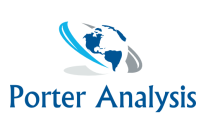SAP is one of the German software company. It was started by Dietmar Hopp, Hans-Werner Hector, Hasso Plattner Klaus Tschira, Claus Wellenreuther in 1972. It deals with enterprise software that helps in managing business operations. Market is divided into different segments by the company: Technology and services, Application. Its core product is ERP software. The Headquarter of SAP is in Walldorf, Germany. The company is providing services to more than 420,000 Businesses. The company also provides various training to its clients. SAP has various regional offices in 180 countries across the world. [1]
Jennifer Morgan is the current CEO of SAP. It is a public listed company. The company is listed in New York stock exchange, Frankfurt Stock Exchange, and DAX. Its annual revenue is $26.94 billion. The stock value of the company is € 122.20 as per the closing of 06-12-2019. There are more than 98,000 employees doing work in this company. The main industry of the company is Enterprise Software. SuccessFactorys, Qualtrics, SAP Concur, SAP Ariba are subsidiaries of this company. [1]
Threats of New Entrants
SAP is doing business in an industry where every company looking for technology enhancement. The startup cost for starting a new software company is high. New entrants have to face a competitive response. Customer’s decision making depends on the ERP of a company. So, the customer selects only those suppliers which are more trustful so brand loyalty exists. Every software company has its software with different features that creates product differentiation. R&D plays an important role in this industry and every company invest a lot of capital on it. This industry is capital intensive and needs a large amount of production. Once the customer purchased the ERP, changing the ERP is not possible because the customer would have to pay a large amount so there is a high switching cost in this market. Therefore, there are low threats of new entrants in this market.
Threats of Substitutes
SAP and Oracle are two big giants of industry. Their core characteristics of products are different. Similarly, there are a lot of diversified segments for which companies are doing business. As the market is diversified and there are some substitutes available in the market. Therefore, threats of substitutes exist in a market.
Bargaining Power of Buyer
As most of the market share is held by a few companies. There are a large number of buyers in the market. There is a high switching cost in a market due to expensive products and the nature of products. Products are differentiated by functionality and characteristics. Buyers are more focused on products and their characteristics rather than the price of the product. The buyer purchases a small portion of the seller’s sale. A single ERP system is used in one company. Therefore, the bargaining power of the buyer is low in this industry.
Bargaining Power of Supplier
As this industry is capital intensive, which depends on capital rather than labors. Companies provide the software. Software is developed by different developers. There are a large number of universities educating software skills to a lot of students. Every year a lot of potential comes in a market for a job. Every individual wants to work for big firms like SAP and others due to the benefits they get in return and to secure the future. So, in this condition companies have a large number of developers available in a market. The company can hire anyone for a specific task. Therefore, all of these factors show that there is a low bargaining power of suppliers in the software industry.
Competitive Rivalry
As the concentration ratio in this industry is high 61%. It means a few numbers of companies are dominating the industry. Price change by one company can affect other company, brand loyalty exists in the market, as customers only select those companies for ERP that has positive word of mouth and goodwill in a market and their product is more efficient than others. Each company has diversified values and products they are offering. Therefore, a moderate level of competitive rivalry exists in the market. [2]
References
1 SAP, 2019, About Company, Global Company Information, [online], Available at: https://www.sap.com/corporate/en/company.html
2 Statista, 2019, Share of the enterprise resource planning (ERP) software solutions market worldwide, as of November 2016, by vendor, [online], Available at: https://www.statista.com/statistics/558784/worldwide-erp-market-share-distribution-by-vendor/
